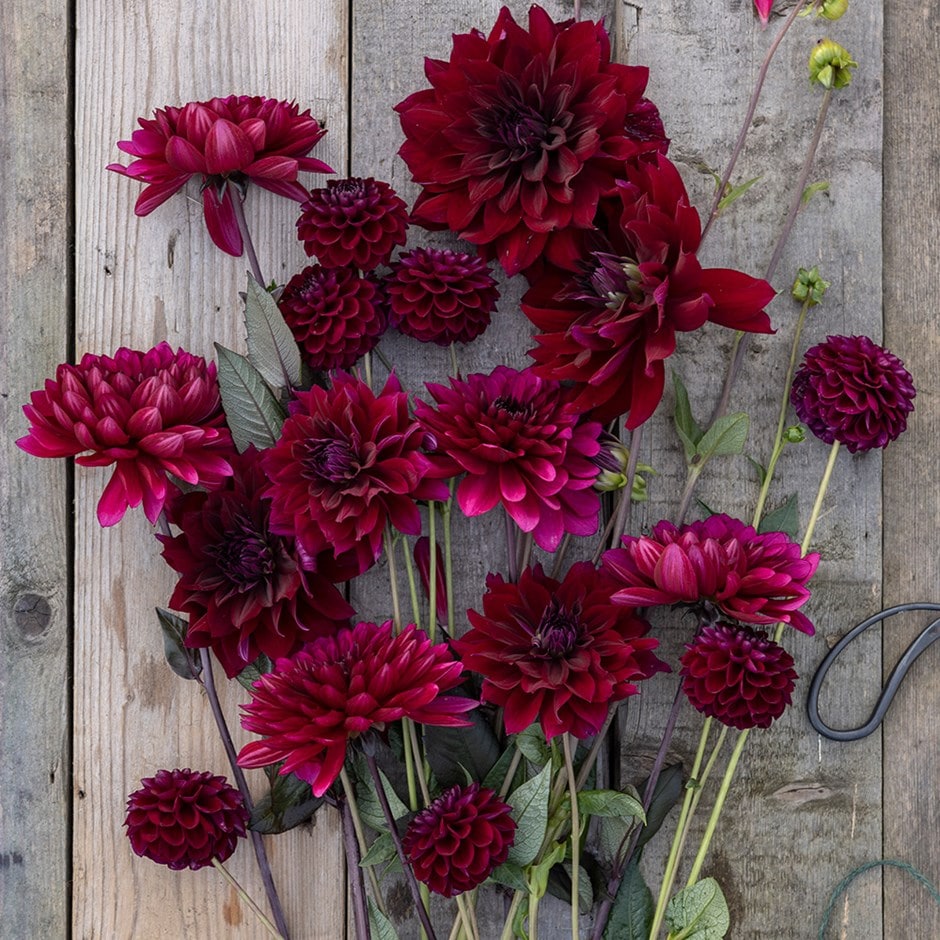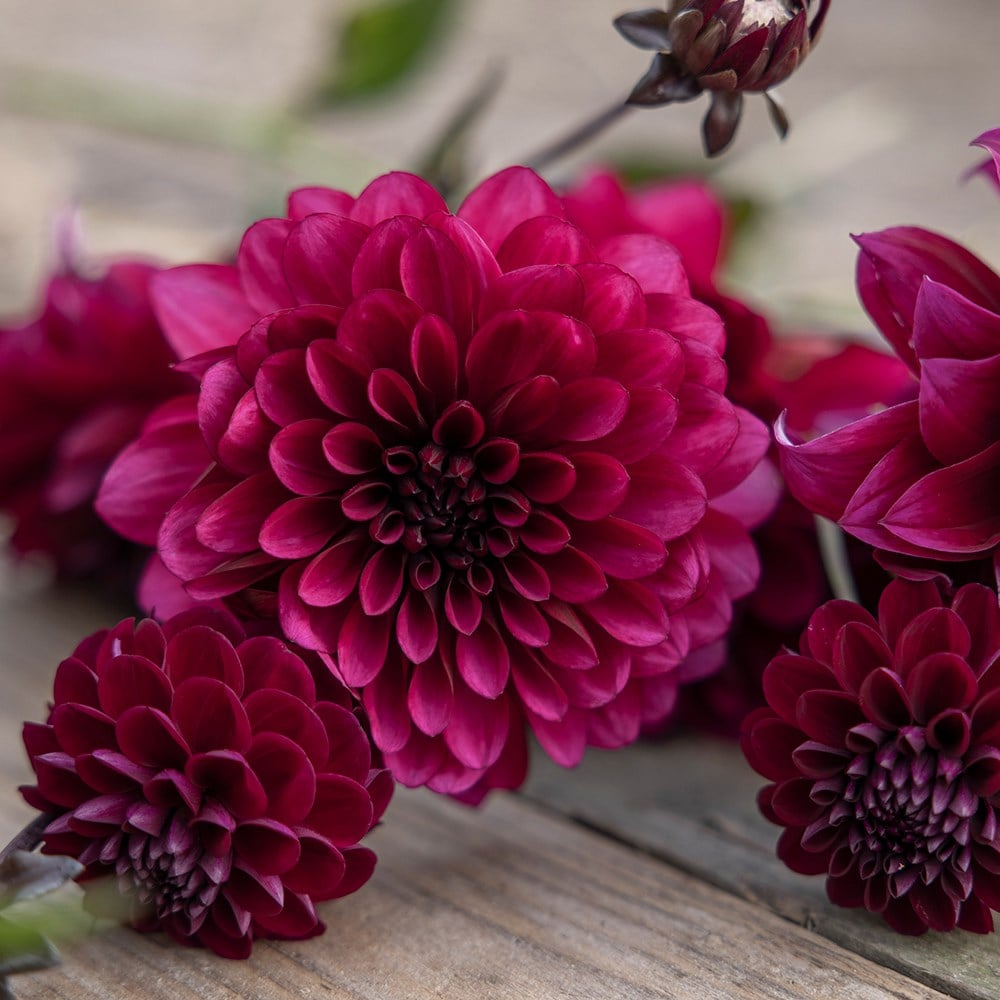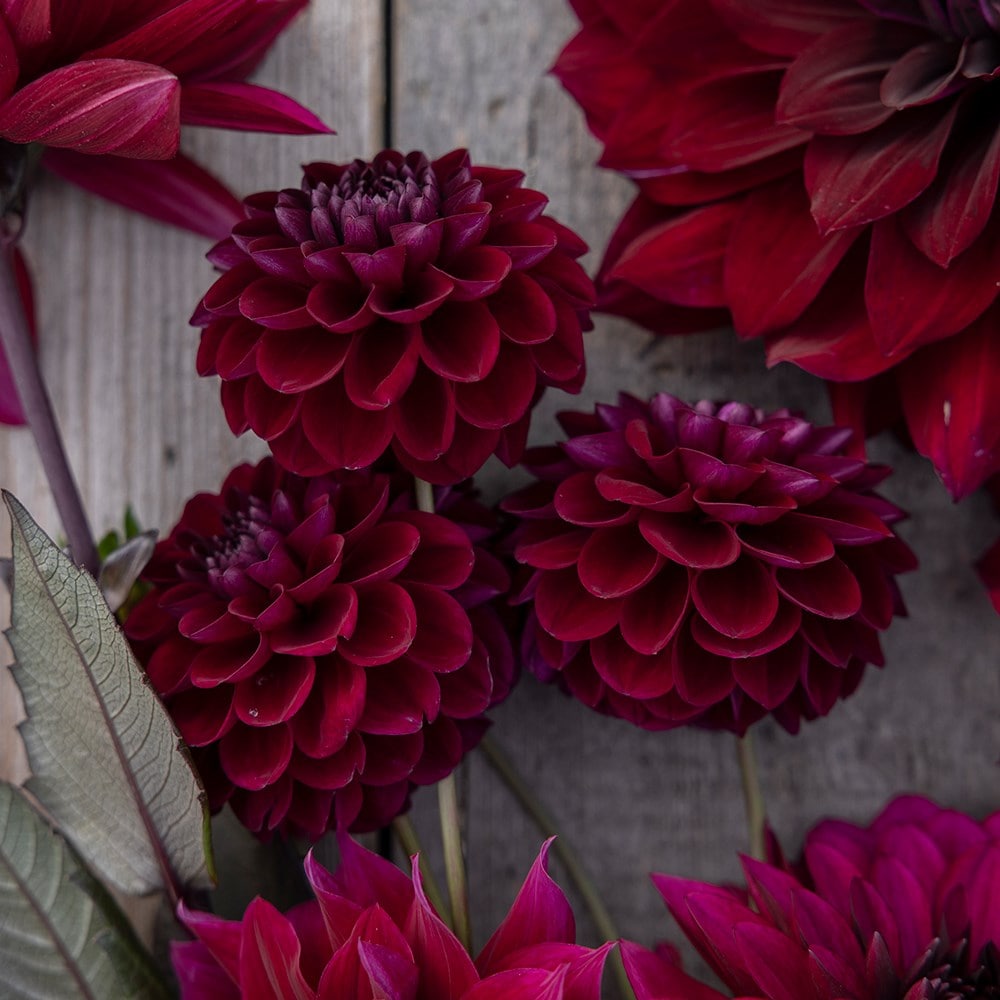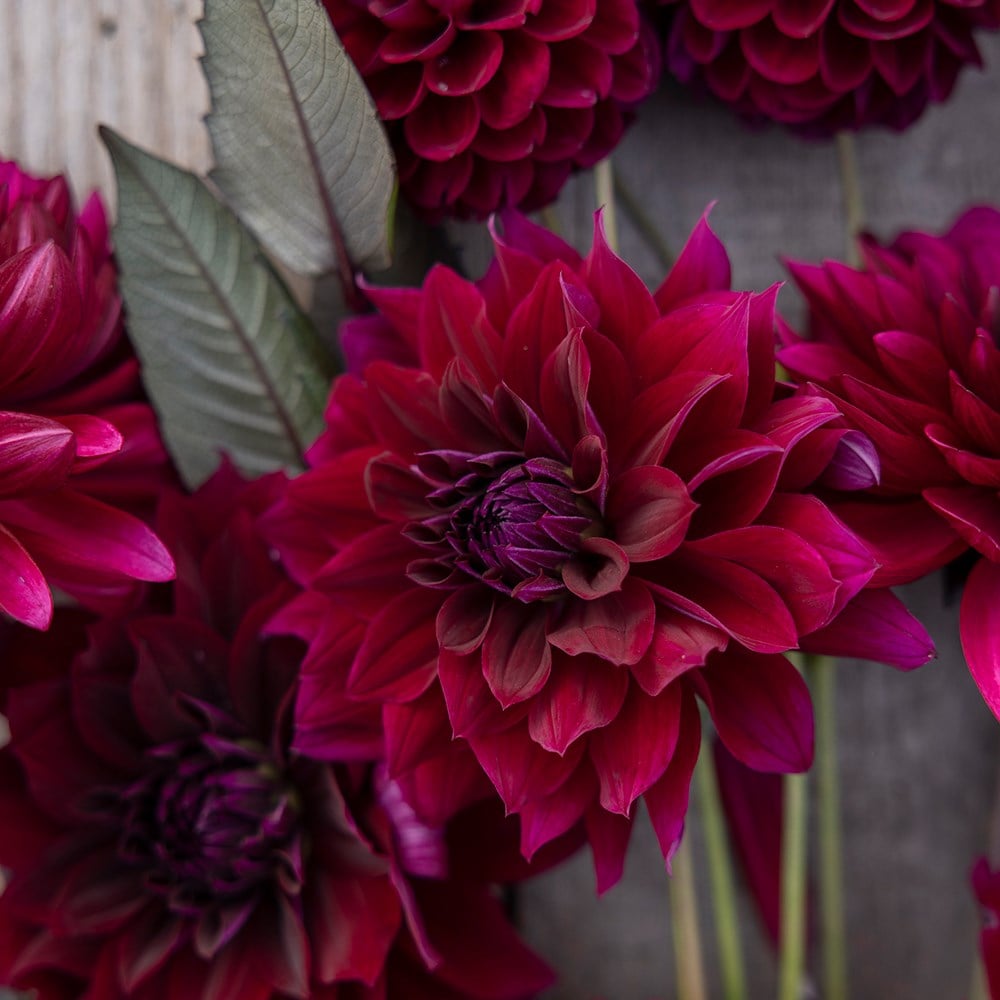Bruised dahlia collection
dahlia collection
- 1 × collection | 3 tubers
- £15.99
- available to order from winter
- 2 + 1 FREE collections | 9 tubers
- £31.98 £47.97
- available to order from winter
Delivery options
- Bulbs (only) £4.95
- Position: Full sun
- Soil: Fertile, humus-rich soil
- Rate of growth: Average
- Flowering period: July to September
- Hardiness: Half hardy (may need winter protection)
A real treat for burgundy, maroon and wine red lovers! Indulge the senses with these contrasting and complementary dark-hued dahlia tubers.
In each collection you will receive one tuber of each of the following:
Dahlia 'Rip City': A stunning cactus dahlia with red-black flowers and a black heart. The fully double flowers have long, narrow, pointed petals that recurve for more than half their length and have a ruffled appearance. The flowers are produced from July until the first frosts. Grows to 1.1m.
Dahlia 'Gipsy Night': As soon as we saw this sumptuous dahlia in the trial beds, it jumped straight to the top of our favourites list! It is very generous with its smallish (up to 7cm wide), ball-shaped heads, which are a plush, velvety shade of claret. It looked stunning with just about everything we paired it with, and it will add real oomph when woven through the border. Grows to 1m.
Dahlia 'Purple Flame' (PBR): A showy dahlia with deep wine to rich pink flowers, up to 15cm across, which top slender dark stems that rise above bronze-tinted foliage from midsummer. It's great for adding a bit of drama to the border - and the flowers will look wonderful in bouquets. Grows to 1m.
Dahlia tubers can be planted outside after frost, or started off in pots under glass in late winter to early spring. Plant them horizontally approximately 12cm deep, making sure the ‘eyes’ are uppermost. Allow enough room between each tuber so the plants can grow and spread to their full size without being overcrowded. While in growth, provide a high-nitrogen liquid feed each week in June, then a high-potash fertiliser each week from July to September. Stake with canes or brushwood if it becomes necessary. In mild areas, leave them in situ over winter, but protect the crown with a generous layer of dry mulch. In colder areas, carefully lift and clean the tubers once the first frosts have blackened the foliage and allow them to dry naturally indoors. Then place the dry tubers in a shallow tray, just covered with slightly moist potting compost, sand or vermiculite and store in a frost-free place until planting out again.
- Humans/Pets: Ornamental bulbs - not to be eaten




